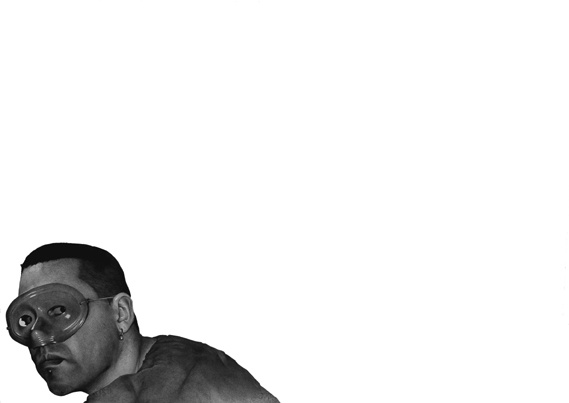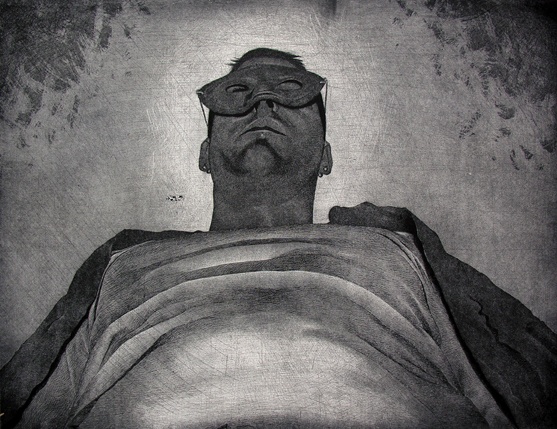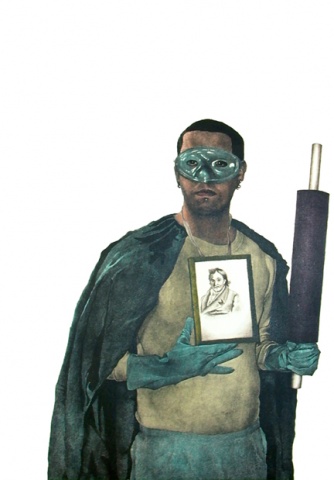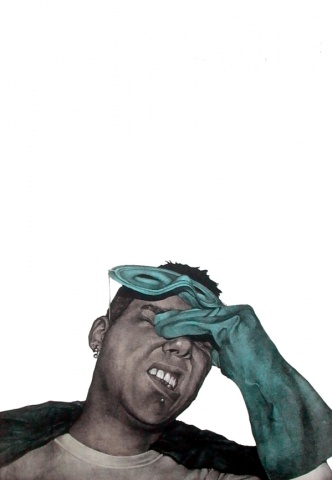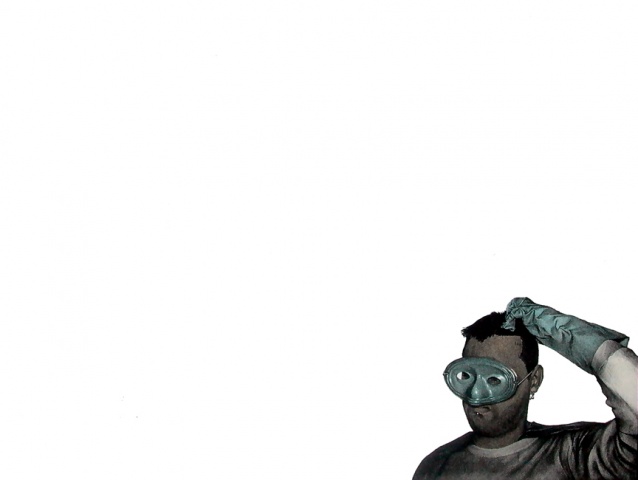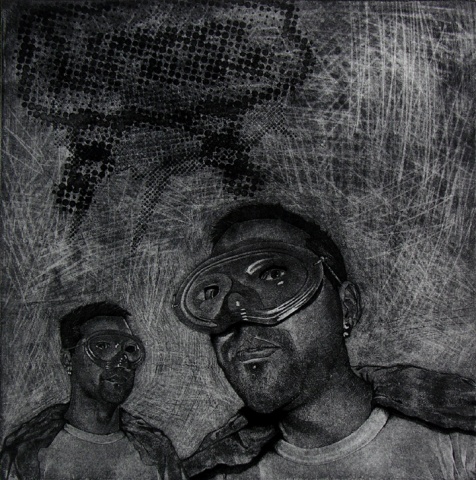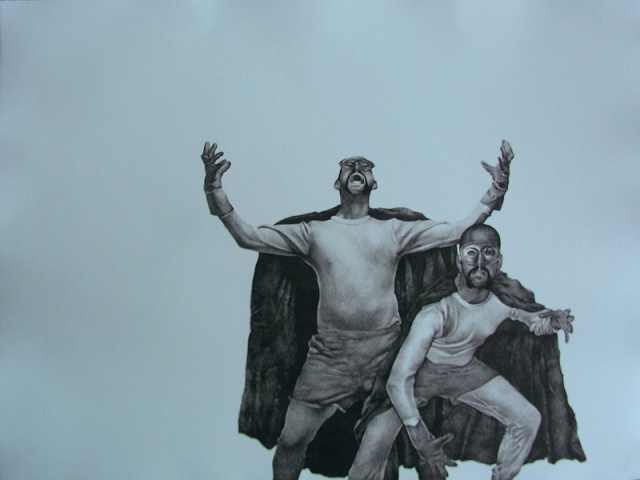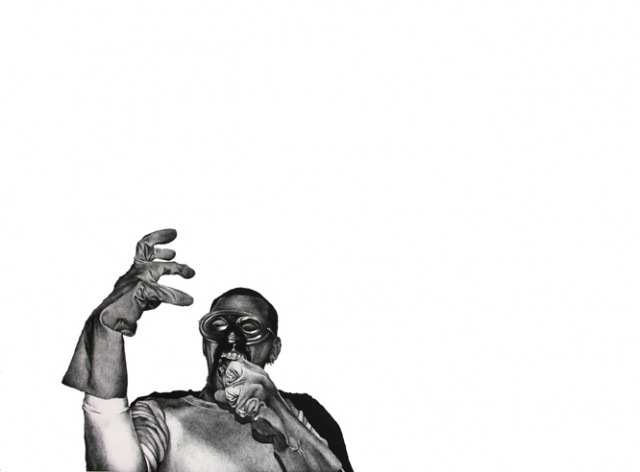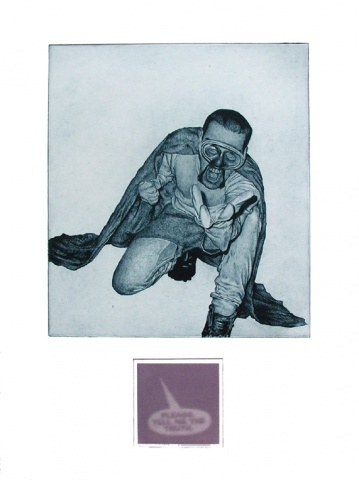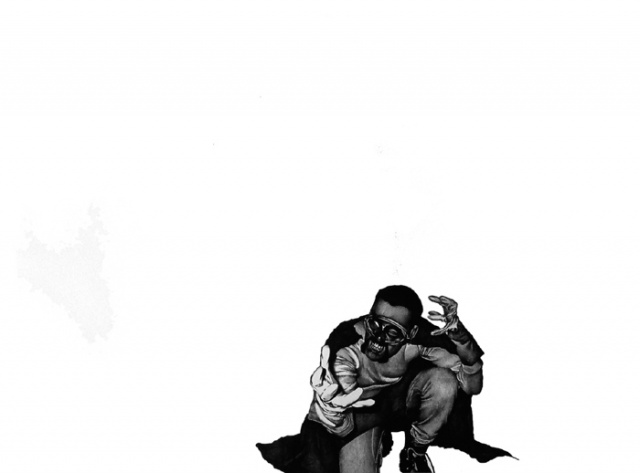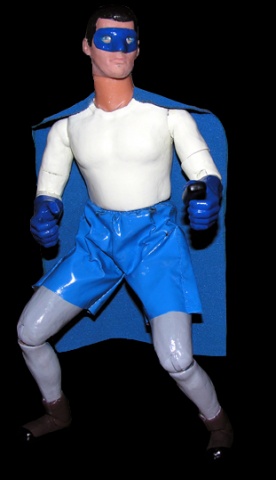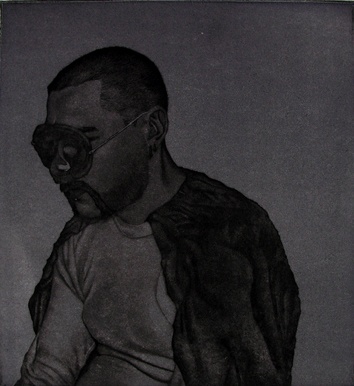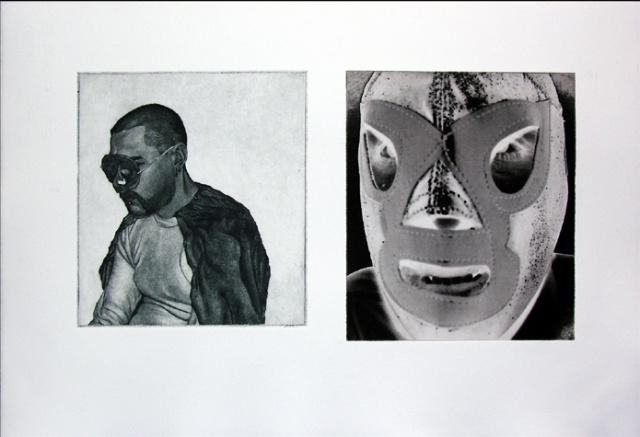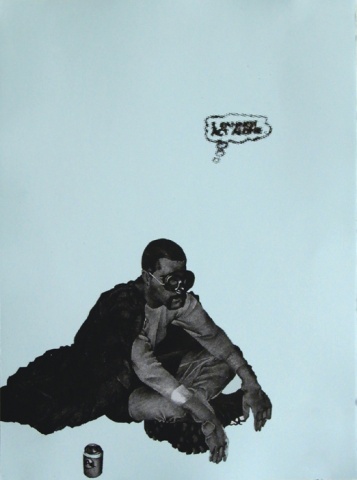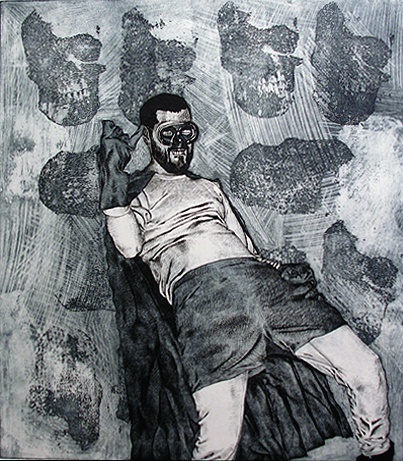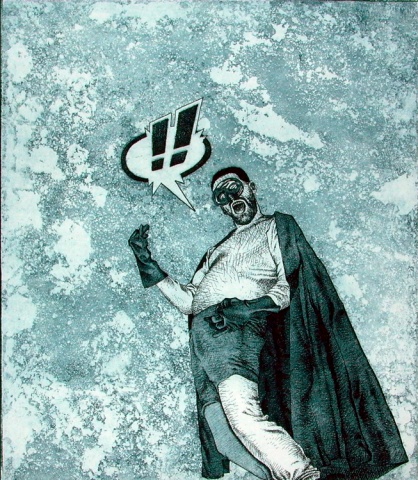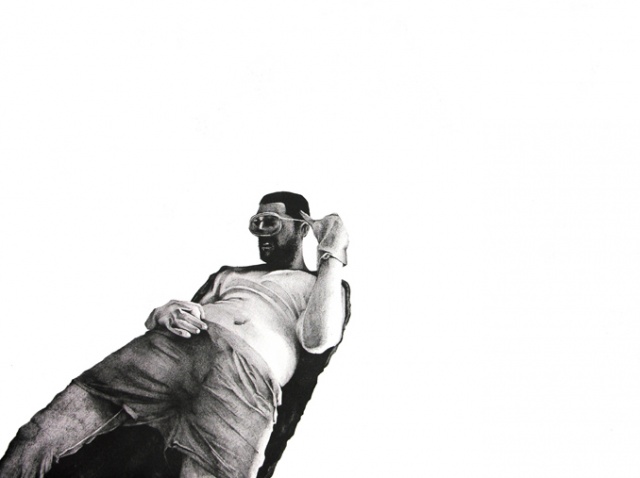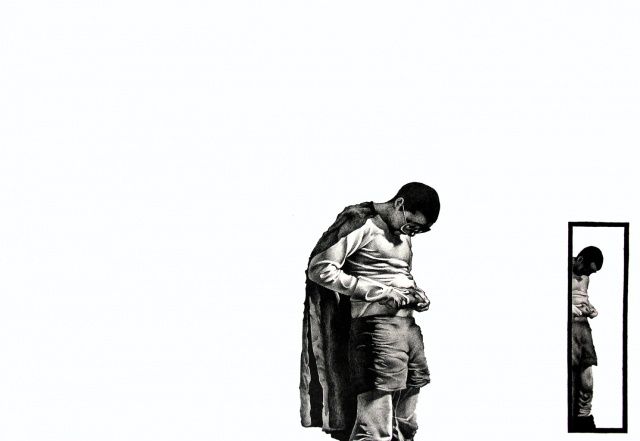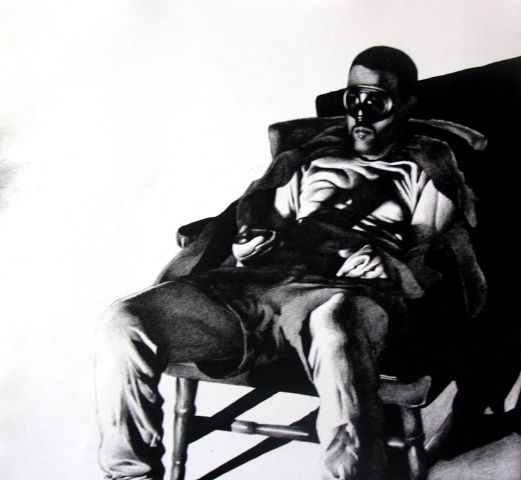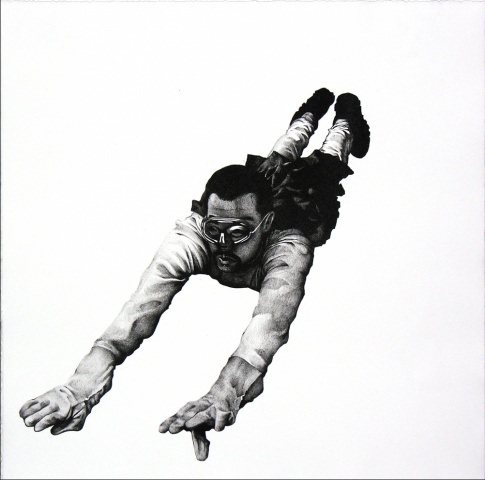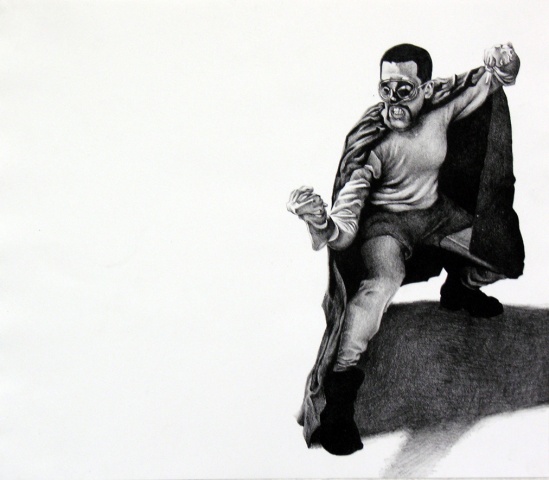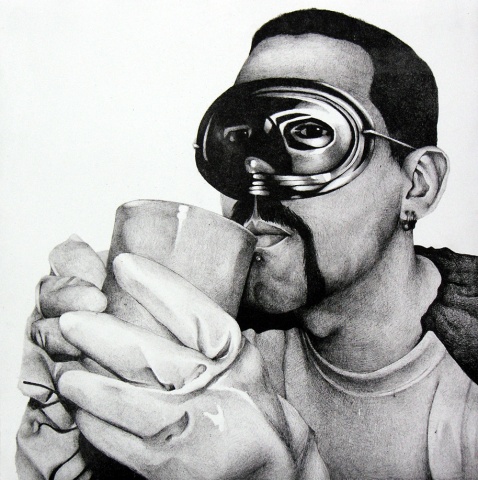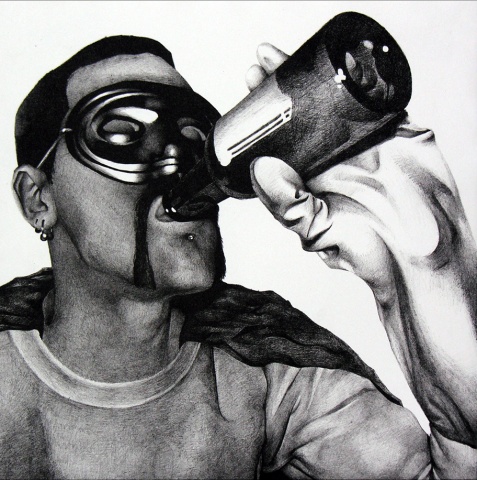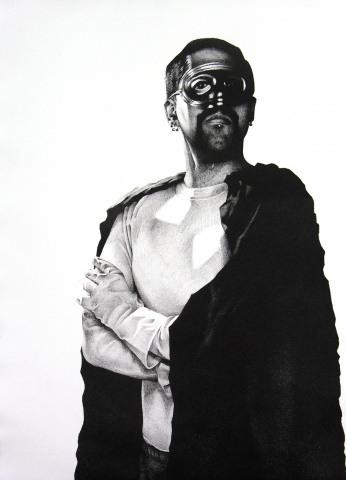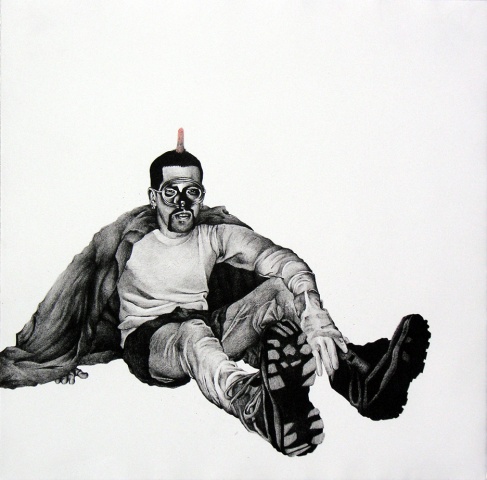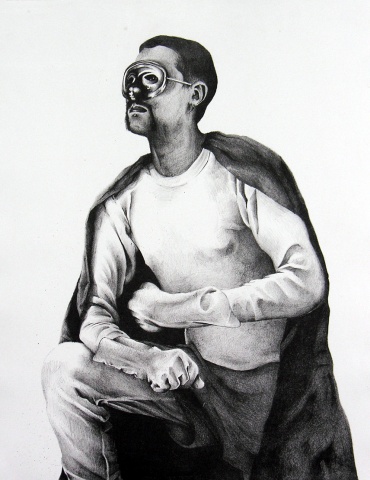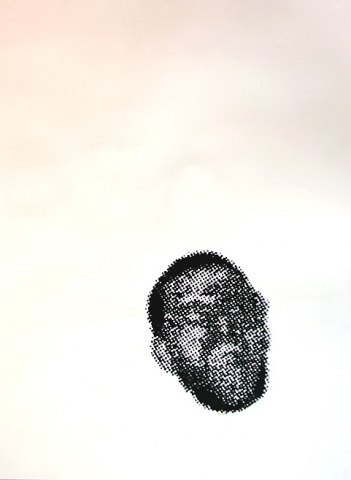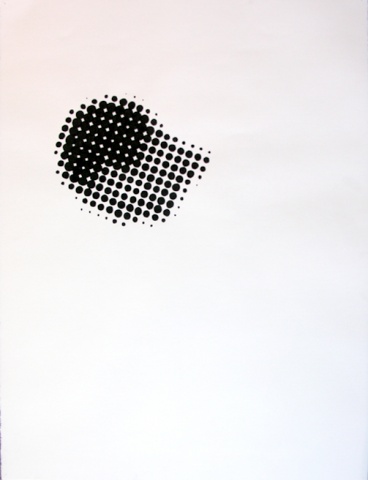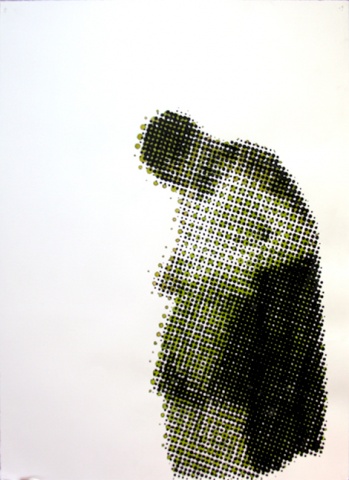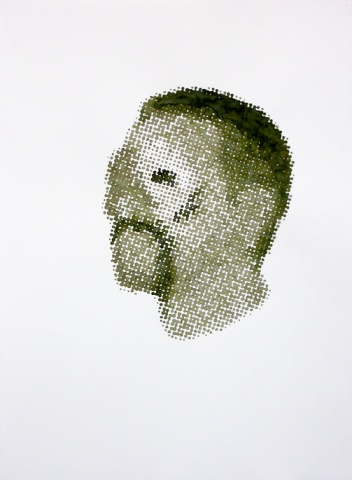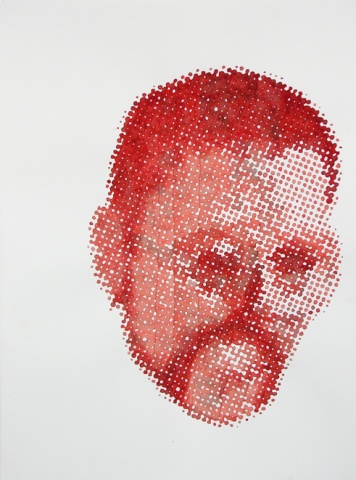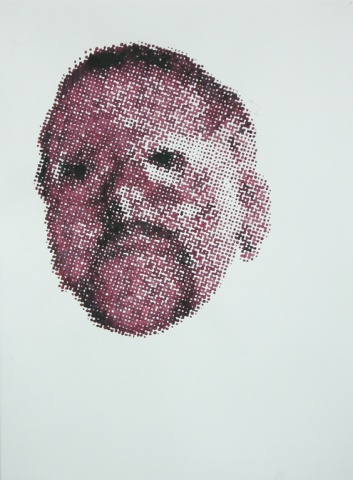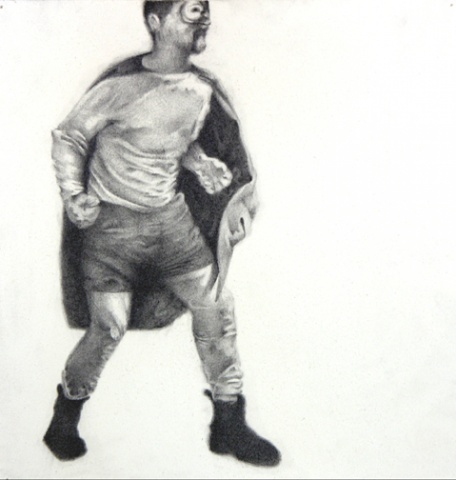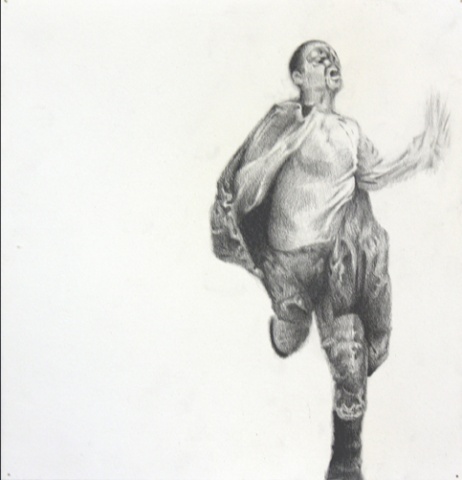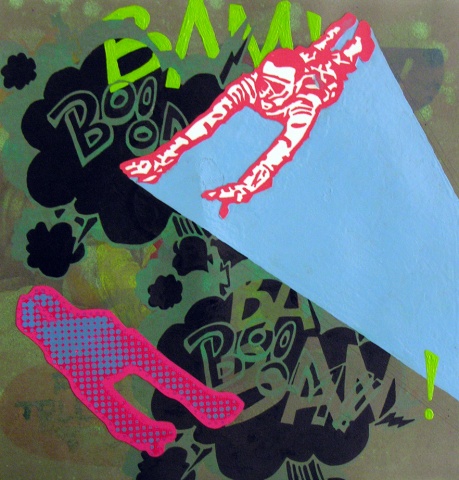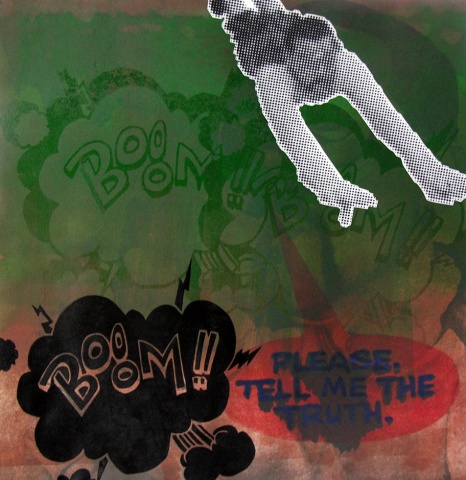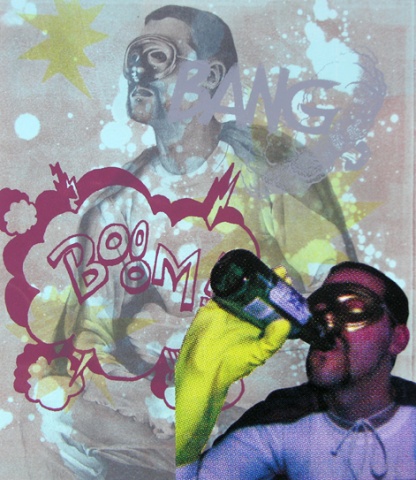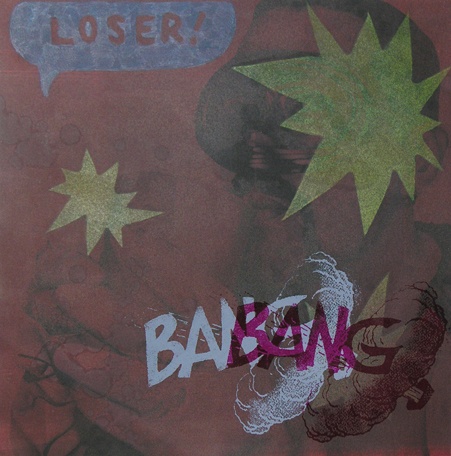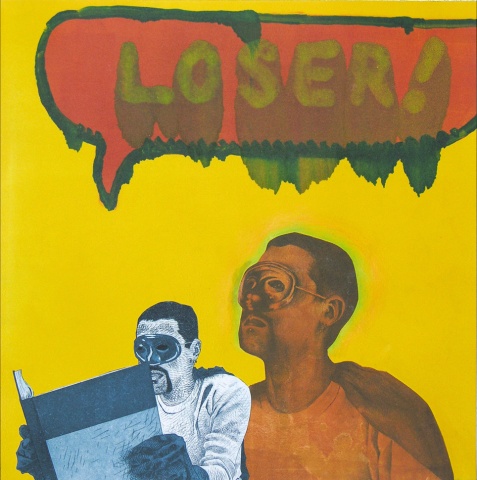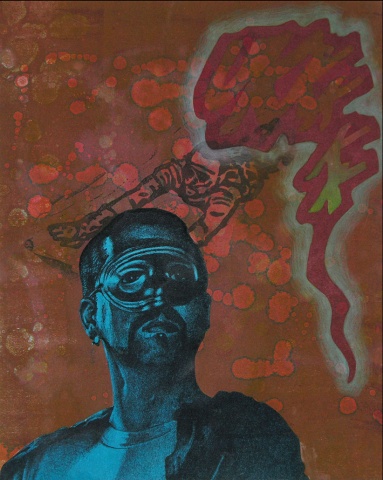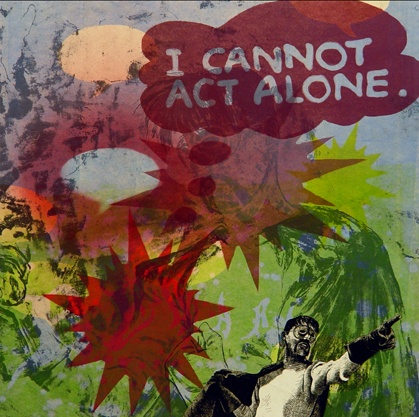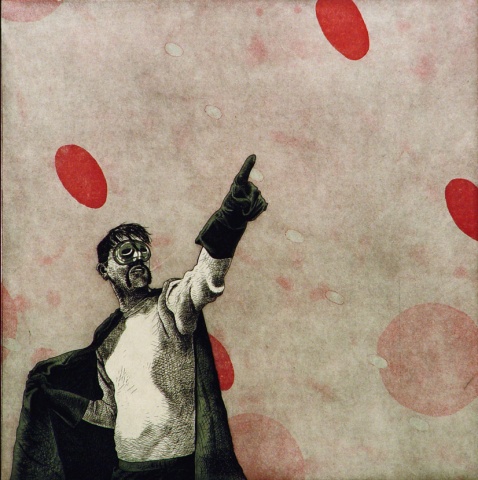Superhero
Comic books, television, and cartoons are forms of popular communication, with their iconic and linguistic codes inhabiting our collective memory. These codes are drawn upon as an oblique self-analysis into the construction of identity and the formation of self. They have shaped and formed how many people process information, fostering a positive commonality of experience.
The guise of the superhero, with all of its connotations of superhuman ability and anonymity, operates as a form of escapism; a deluded coping mechanism fabricated as the antithesis to everyday actions and behavior. The power fantasy inherent in the relationship between the superhero and adolescent male serves as a metaphor for the artistic process. Artistic goals and desires versus the reality and struggle to obtain these goals. The artist and superhero are the same, because they both feel “chosen”, with direction and a sense of purpose. The superhero operates dually as a form of self-mockery and as the ultimate shield against the fragility of existence.
The perception of the comic book reader is primarily one of an adolescent, introverted male. This generalization is not rejected; rather, it is used as a springboard for interpretation. Removed from the context of a narrative, words and images play off of this stereotype utilizing humor, self-deprecation, and formal abstraction as defense mechanisms to ultimately conceal specific issues of awkwardness, loneliness, insecurity, and social anxieties and pressures. Semi-autobiographical, the work is not the result of adult explorations into childhood experience, but rather how childhood experience affects my habits and behavior. Fear and anxiety are being projected into the work, as I attempt to reconcile my existence with inevitability.
